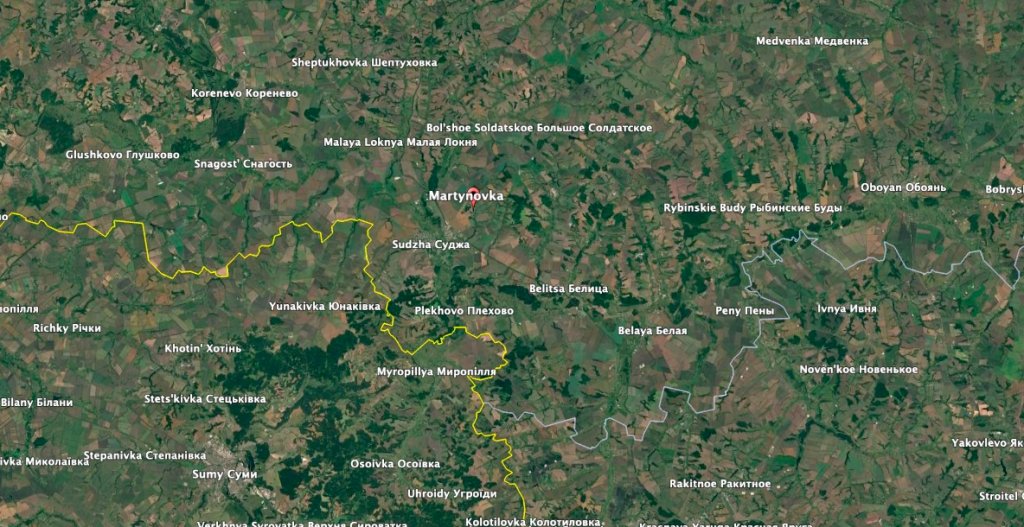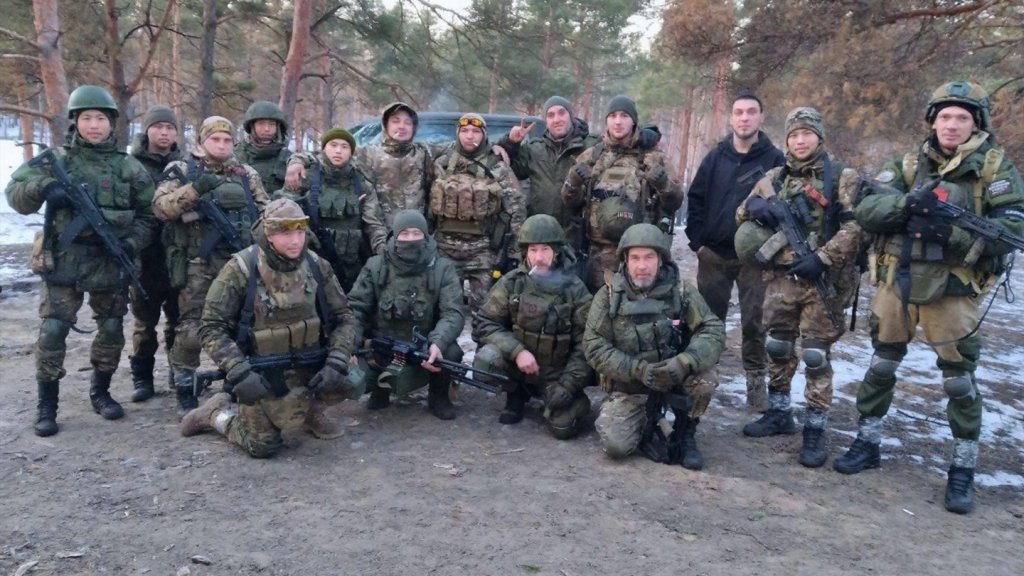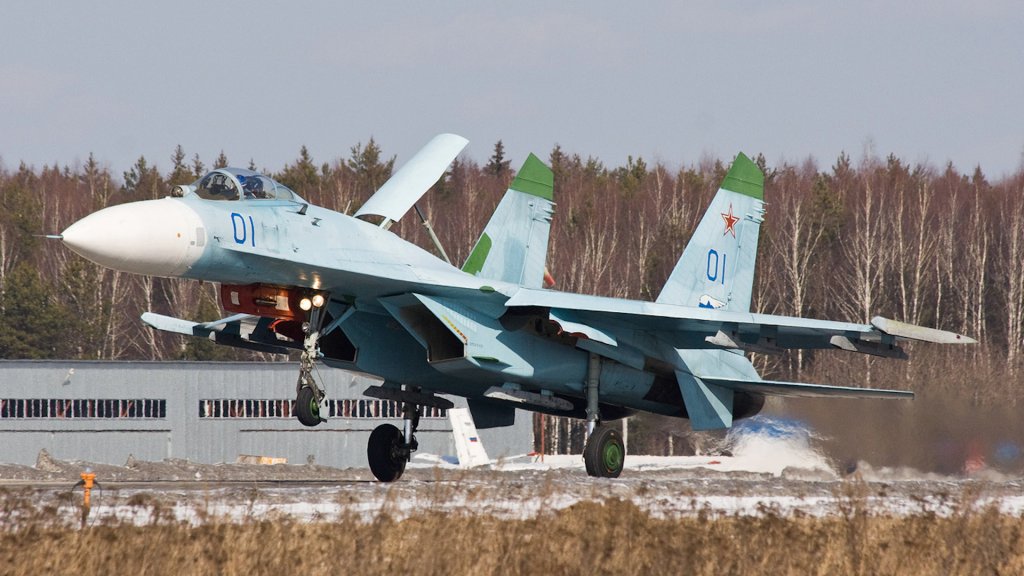North Korean troops began conducting large-scale assault operations against Ukrainian forces in Russia’s Kursk region last week, the head of the Ukrainian Defense Intelligence Directorate (GUR) told The War Zone on Monday. That timeline was later confirmed by the Pentagon.
While there have been about 12,000 North Koreans in Kursk for months to help Russia push back the Ukrainian invasion there, they only recently began to attack in larger numbers, Lt. Gen. Kyrylo Budanov told us. His comments followed those by Ukrainian President Volodymyr Zelensky, who on Saturday said that “the Russians have begun to use North Korean soldiers in their assaults — a significant number of them. The Russians include them in combined units and use them in operations in the Kursk region. So far, only there. But we have information suggesting their use could extend to other parts of the frontline. There are also already noticeable losses in this category.”
So far, North Korea has suffered more than 200 casualties in those operations, GUR said on Telegram. One of their positions in Kursk was “effectively covered” by first-person view (FPV) drones. Pyongyang’s forces, as we previously noted, have already been killed in Ukraine, but on a much smaller scale.
GUR posited that there are challenges in integrating the North Korean troops into Russian ranks.
“Language barrier remains a difficult obstacle to management and coordination of actions,” GUR explained. As a result, North Korean soldiers fired on vehicles belonging to the Akhmat battalion of Chechen leader Ramzan Kadyrov. At least eight of those fighters were killed in the incident, GUR claimed.
On Saturday and Sunday, at least 30 North Koreans were killed or wounded in fighting near three villages – Martynovka on the easternmost portion of the Ukrainian salient, Plekhovo in a contested area about 10 miles to the south, and Vorobzha, which is about nine miles to the southeast in Russian-held territory.
The War Zone cannot independently verify Ukraine’s casualty claims.

“Due to losses, the assault groups are being replenished with fresh personnel, in particular from the 94th separate brigade of the DPRK army, to continue active combat operations in the area,” GUR explained, using the official Democratic People’s Republic of Korea (DPRK) acronym for North Korea.
The Pentagon’s top spokesman on Monday confirmed GUR’s claim that the North Koreans are now fighting alongside Russians.
They entered combat alongside Russian troops “about a week ago,” Air Force Maj. Gen. Pat Ryder told reporters at a Pentagon briefing.
“We do have indications that they have separate casualties, both killed and wounded,” he said. “I don’t have specific numbers to provide for you, but that is obviously something that we continue to monitor. And as we’ve said all along, those forces are legitimate military targets for the Ukrainians, given that they are engaged in active combat.”

After launching the Kursk invasion in August, Ukraine captured about 500 square miles of what was initially lightly defended territory. Russia has since mounted two counter-operations, including one in September that saw upwards of 60,000 troops recapture about half of what it had lost by the end of November. Since then, there haven’t been any major territorial gains or losses by either side as the fight has bogged down in the frigid December weather.
Having 12,000 North Koreans in the mix is certainly a boon for Russia, even with language and command and control issues. As we have noted before, as Moscow and Pyongyang continue to cement their relationship, many more troops could be on the way given that manpower is North Korea’s greatest resource.
There are many other facets to this relationship.
In addition to potentially receiving air defense systems and energy supplies from Russia in exchange for the troops in Kursk and assorted weaponry, including millions of artillery shells, North Korea is reportedly going to receive fighter aircraft as well.

There have also been concerns that Moscow might provide North Korea with technologies to help accelerate its nuclear and long-range ballistic missile programs. Russia would also be a prime candidate to assist North Korea in pushing forward its submarine program, which also includes a growing family of submarine-launched ballistic missiles (SLBMs) as well as increasingly advanced submarine technologies.

On Monday, the foreign ministers of Australia, Canada, France, Germany, Italy, Japan, Republic of Korea, New Zealand, United Kingdom, United States, and High Representative of the European Union issued a joint statement condemning the burgeoning North Korea-Russia relationship. Those nations also raised concerns that this is inflaming tensions on the Korean peninsula.
“Direct DPRK support for Russia’s war of aggression against Ukraine marks a dangerous expansion of the conflict, with serious consequences for European and Indo-Pacific security,” the statement read in part. “The DPRK’s export of ballistic missiles, artillery shells, and other military materiel to Russia for use against Ukraine and Russia’s training of DPRK soldiers involving arms or related materiel represent flagrant violations of United Nations Security Council resolutions 1718 (2006), 1874 (2009), and 2270 (2016). We are deeply concerned about any political, military, or economic support that Russia may be providing to the DPRK’s illegal weapons programs, including weapons of mass destruction and their means of delivery, which would exacerbate the already tense environment on the Korean Peninsula.”
Ukraine’s investment in Kursk comes as it continues to lose ground in the eastern part of its own country. As we have continuously highlighted in the past, Kursk is a bargaining chip. With Donald Trump set to return to the White House on Jan. 20, both sides are trying to grab as much territory as possible ahead of any future peace negotiations or any plan implemented by the new administration.
The Latest
Elsewhere on the battlefield, Russia continues to make gains in the east, particularly in Donetsk Oblast. Their push toward Pokrovsk continues but has yet to succeed.
These are the key takeaways from the latest Institute for the Study of War assessment.
- Russian forces conducted a roughly battalion-sized mechanized assault in the Siversk direction following a recent reported command change of the Russian forces operating near Siversk.
- The recent Siversk assault indicates that Russian forces appear to be learning to conduct more effective assaults but remain far from restoring maneuver to the battlefield.
- North Korean forces are reportedly facing expected struggles with high casualties and poor communication with Russian forces in Kursk Oblast, likely disrupting coordination between North Korean and Russian personnel and undermining Russian military operations.
- Russian forces recently advanced near Siversk, Toretsk, Pokrovsk, and Vuhledar.
Ukraine’s Security Service (SBU) conducted “a precision drone operation targeting ammunition and fuel storage facilities near the village of Markyne in the Russian-occupied Donetsk Oblast,” the Ukrainian Suspline media outlet reported.
“The ammo depot contained thousands of ammunition items, including shells for infantry fighting vehicles and tanks, anti-tank guided missiles, mines and grenades, millions of ammunition rounds of various calibers,” Suspline explained.
Learning from its enemy, the Russian army is developing a separate military drone branch akin to Ukraine’s, Defense Minister Andrey Belousov announced Monday.
It is currently unknown what structure and tasks the new formation will have, as well as whether it will include existing UAV operator units operating as part of the occupation forces in Ukraine, according to the Ukrainian Militarnyi website. “The Russians will likely copy the general principles that underpin the Ukrainian Unmanned Systems Forces (UAF), which were created as a separate branch of the Armed Forces of Ukraine in February 2024.”
New video emerged of the Hitchhiker multi-purpose drone interceptor, which has reportedly been successfully tested on the frontlines.
Developed by two American tech companies – IronNet, the AI-based collective defense cybersecurity company, and Asterion Systems, a leader in counter-unmanned air system (UAS) technology – Hitchhiker was designed to take down hostile drones, according to Newsweek.
The defensive network “is formed by combining IronNet’s Iron Dome cybersecurity system, which provides real-time detection of cyber threats, with Asterion’s Hitchhiker counter-drone technology,” the publication reported. “The system is designed to neutralize hostile drones.”
The propeller-driven, electronically powered Hitchhiker is reportedly capable of reaching speeds of 279mph with a range of 125 miles.
Ukrainian vehicles are reported to increasingly use radio-electronic jamming systems to protect against FPV and Mavic-type drones. They send out broadband signals creating “noise” to jam the command signal between the drones and the operator.
A GUR sniper with the call sign “Lecturer” killed a Russian soldier at a distance of 2,069 meters, or nearly 1.3 miles, GUR claimed, adding it was the longest kill shot ever fired by a Ukrainian.
The sniper “was actually on the same terrain level with the Russian occupier, aimed in the harsh Ukrainian December, fired while standing in a trench at the enemy, who was moving in a landing – and hit with the first shot,” GUR stated on its website. “‘In the conditions of modern warfare, you do not have the opportunity to climb out of a trench, lie down in a landing, etc. Enemy drones do not allow you to shoot from classic positions,’” the scout explained.”
The shot was “a masterful job that will definitely go down in the history of our struggle for freedom,” Budanov said in a statement on the GUR website. “Hitting a moving target at such a distance is a huge achievement; evidence of high professionalism and concentration, which snipers of Ukrainian military intelligence are famous for. We continue the fight to destroy even more Russian occupiers!”
To make the shot, “Lecturer” said he fired a .338 Lapua Magnum (8.6mm) round from a Sako TRG M10 sniper rifle.
“But if I had a choice: to choose one rifle and one cartridge, I would take the Cadex Kraken and the .338LM caliber,” noted “Lecturer.”
The confirmed record for this caliber belongs to the British sniper, Corporal of the Royal Guards Regiment “Blues and Royals” Craig Harrison. In November 2009, during the war in Afghanistan, he successfully hit two Taliban at a distance of 2,475 meters (about 1.53 miles) and also damaged their machine gun.

Ukraine continues to up its decoy game. Video recently emerged of a pretty good mockup of a U.S.-donated M142 High Mobility Artillery Rocket Systems (HIMARS). Unlike inflatable decoys, this HIMARS is fashioned out of an existing vehicle, making it an even more realistic option to fool Russians.
Zelensky frequently visits troops in the field. He recently toured Ukraine’s first underground advanced surgical group, which has reportedly already saved more than 1,000 lives.
Norway will provide $242 million “to strengthen the Ukrainian Navy,” according to the Norwegian Defense Ministry (MoD). “The funding will, among other things, be used to protect people in Ukraine from attacks as well as for mine clearance operations and training of Ukrainian soldiers.”
‘Ukraine needs more support to deter Russian naval forces in the Black Sea in the time ahead,” Prime Minister Jonas Gahr Støre said on Monday. “It is essential to protect the Ukrainian population and Ukrainian infrastructure from attacks by Russia’s Black Sea Fleet. It is also important to protect exports by sea of grain and other products, which generate crucial revenues for Ukraine.”
Ukraine has begun assembling a NATO-standard assault rifle locally, according to Euromaidan Press, citing a Ukrainian Defense Industry JSC announcement.
“The licensed assembly of CZ BREN 2 rifles reportedly started last month – in November – at one of the military conglomerate’s facilities, the company reported,” the publication reported.
“The CZ BREN 2 is already in service with the Ukrainian army, as well as the armed forces of the Czech Republic, Portugal, French National Gendarmerie operational group, Polish border service, and Romanian gendarmerie,” Euromaidan Press explained. “The localization of weapons production is gradually making Ukraine less reliant on its allies for arms supplies and more resilient against ongoing Russian aggression.”

Dec. 14 was a particularly bad day for Russia, according to the General Staff of the Armed Forces of Ukraine. Moscow lost the largest number of vehicles since the beginning of the large-scale invasion, according to the General Staff, which claimed its forces destroyed or damaged 181 vehicles. The War Zone cannot independently verify that figure.
You can’t fly much lower than these two Ukrainian Mi-24 Hind helicopter gunships. The video below offers a cockpit view of them following a motorway to the front just a few feet above the roadway.
And finally, Russia continues to find new ways to add armor to vehicles for protection against FPV drones. In this case, the tracked vehicle has so much extra armor and caging that it looks like a Mad Max prop.
That’s it for now.
Contact the author: howard@thewarzone.com
